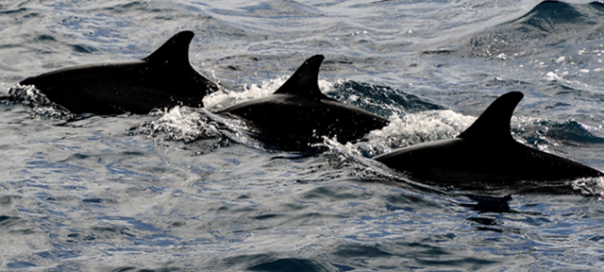
© oytun 73
Summer 2015 is again seeing numbers of dead dolphins washing up on the shore of Bulgaria's Black Sea coastline, with violence suspected as the cause of death in some cases,
but as in all previous years, there is no clarity on what causes the phenomenon.In some cases in previous years, there have been allegations of dolphins being shot or otherwise killed by fishermen protecting their nets.
None of these allegations has been proven and no one has been arrested in connection with the killing of a dolphin along Bulgaria's Black Sea coast for years. Activists have alleged that police show scant interest in investigating the cases.
There are three species of dolphins in the Black Sea off Bulgaria - the short-beaked common dolphin, the harbour porpoise, and the common bottlenose dolphin - all of them protected by law. The penalty for killing a dolphin from any of these species is 5000 to 20 000 leva (about 2500 to 10 000 euro) and imprisonment of up to five years.
Bulgaria's Biological Diversity Act also bans harassing, chasing or capturing dolphins from these species, and says that if a dead dolphin is washed ashore, it should be moved until examined by the Regional Enviroment and Water Inspectorate to establish the species and to report on the death of the Minister of Environment and Water.
In 2006, a national network concerning dolphins washed ashore or caught in fishing nets was set up, run by the Institute of Fishing Resources in Varna and with the participation of the Regional Enviroment and Water Inspectorate in the city of Bourgas and the Green Balkans NGO.
In 2015, dead dolphins have again made headlines in Bulgaria, the total since the beginning of the year running to 26 by the beginning of August.According to the Regional Enviroment and Water Inspectorate in Bourgas, violence was suspected to the cause of death in three cases.
A report by Bulgarian National Radio said that, "according to experts", the number of dolphins washed ashore was not large considering their rapidly growing population.
Causes of death are estimated to include, besides natural causes, entanglement and strangulation in fishing nets, as well as diseases.
To prevent entanglement of marine mammals in fishing nets, it is possible to use special devices attached to the nets to deter animals such as dolphins, according to Krusto Popov, an official in the biodiversity department of the Environment Ministry. He said that Bulgaria was beginning a pilot project to test the effectiveness of these devices.
The number so far in 2015 appears slightly lower than in previous years.
In 2012, for example, a total of 74 dolphins were found dead on Bulgaria's Black Sea coast.The issue was in the forefront particularly in 2011, when photographs that spread in social networks and were published by the media appeared to show bullet wounds in a dolphin found dead on the beach in the Black Sea resort town of Tsarevo.
In spite of the large-scale killing of dolphins in the Black Sea, especially in the second half of the 20th century, there have been reports that recent years have seen population growth.
According to a 2002 report by the Species Survival Network, the primary current threat to the Black Sea bottlenose dolphin is habitat loss and a decline in habitat quality.
The ecosystem of the Black Sea has been highly changed and disturbed, primarily due to extensive pollution, coastal development, disturbance caused by extensive vessel traffic, over-fishing and the impacts of introduced species. The ecosystem is also affected by global changes such as climate change and increased UV-B radiation, the report said.
The Black Sea, as an enclosed water body with limited water exchange and slow circulation, is especially vulnerable to pollution. The input of nutrients from agriculture and sewage has caused eutrophication and widespread algal blooms.
Dolphins, as top predators, are uniquely at risk from pollution, the report said. Very high concentrations of certain contaminants have been reported in the bodies of dolphins in the Black Sea, making them especially vulnerable to reproductive disorders and infectious diseases. Recent mass-mortalities of dolphins in the Black Sea have been associated with the degraded state of their environment, especially exposure to chemical pollutants, according to the network's report.
Reader Comments
to our Newsletter